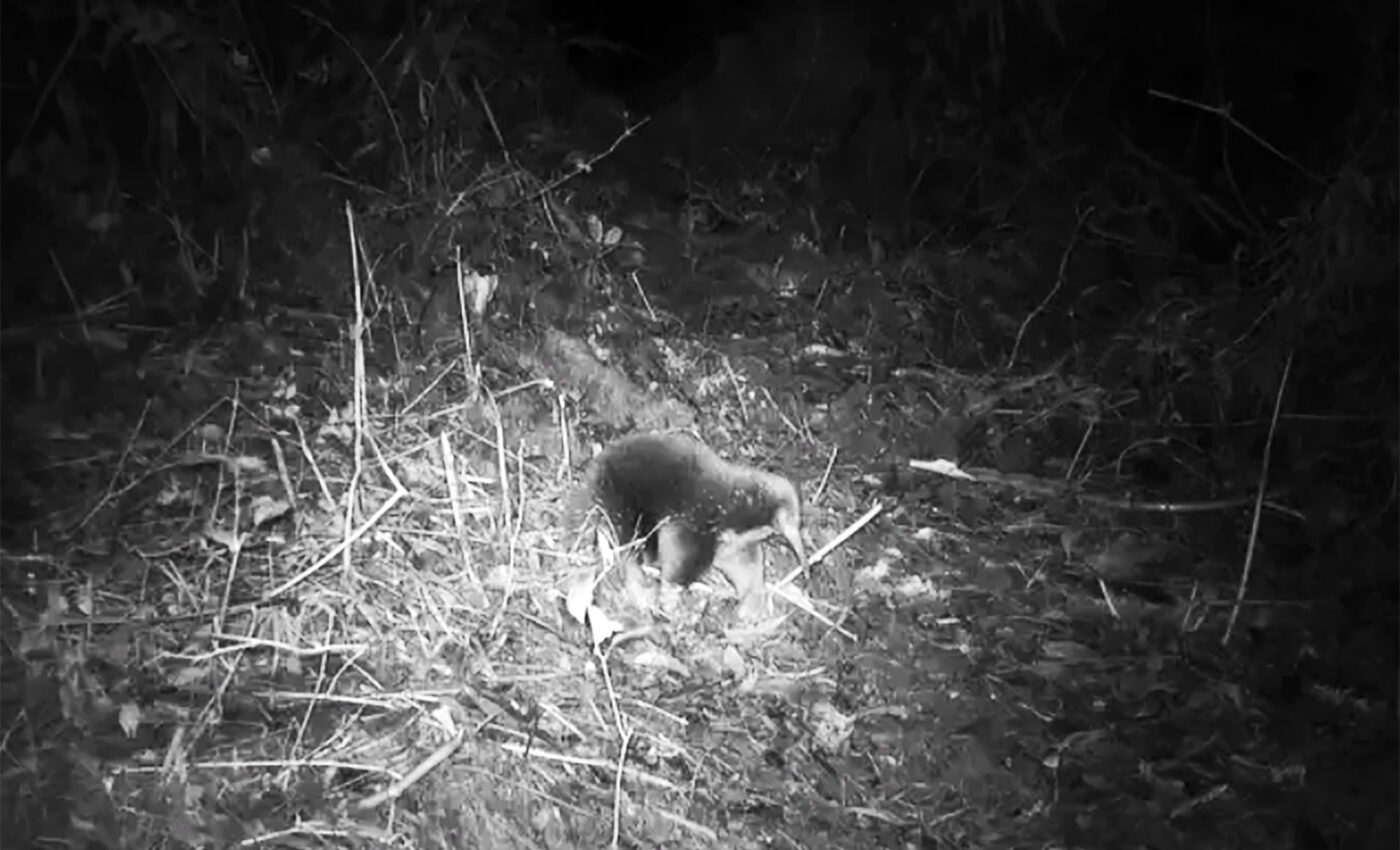
Bizarre egg-laying mammal rediscovered in the Cyclops Mountains
A team of international researchers has rediscovered Attenborough’s long-beaked echidna in the Cyclops Mountains of Indonesia’s Papua Province. This marks the first sighting of the elusive mammal in more than six decades.
This rare, egg-laying mammal, which is named after renowned broadcaster Sir David Attenborough, was last recorded by scientists in 1961.
Cyclops Mountains expedition
The successful rediscovery was made possible through the deployment of over 80 camera traps in a challenging project led by Dr. James Kempton from the University of Oxford.
The project was part of an extensive research expedition, a collaboration with Indonesian NGO Yayasan Pelayanan Papua Nenda (YAPPENDA), Cenderawasih University, Papua BBKSDA, the National Research and Innovation Agency of Indonesia (BRIN), and Re:Wild.
The research has unveiled many previously unknown species and a new cave system, all within the remote and treacherous terrain of the Cyclops Mountains.
Monotreme species
Attenborough’s long-beaked echidna is a remarkable creature, belonging to the monotreme group of mammals, known for their unique characteristic of laying eggs. This echidna is one of the five surviving monotreme species, making it a crucial guardian of this evolutionary lineage.
“Attenborough’s long-beaked echidna has the spines of a hedgehog, the snout of an anteater, and the feet of a mole. Because of its hybrid appearance, it shares its name with a creature of Greek mythology that is half human, half serpent,” explained Dr. Kempton.
“The reason it appears so unlike other mammals is because it is a member of the monotremes – an egg-laying group that separated from the rest of the mammal tree-of-life about 200 million years ago.”
Notoriously difficult to find
The researchers noted that echidnas are notoriously difficult to find since they are nocturnal, live in burrows, and tend to be very shy. Attenborough’s long-beaked echidna has never been recorded anywhere outside the Cyclops Mountains.
For their search, the team deployed over 80 trail cameras, making multiple ascents of the mountains, and ultimately climbing more than 11,000 meters.
New genus of shrimp
In addition to the echidna, the team made several other significant discoveries. These included the rediscovery of Mayr’s honeyeater – a bird unseen since 2008 – and an entirely new genus of ground and tree-dwelling shrimp.
“We were quite shocked to discover this shrimp in the heart of the forest, because it is a remarkable departure from the typical seaside habitat for these animals,’ said Dr. Leonidas-Romanos Davranoglou, lead entomologist for the expedition.
“We believe that the high level of rainfall in the Cyclops Mountains means the humidity is great enough for these creatures to live entirely on land.”
Unexplored cave system
The team also found an abundance of underground species that are all new to science, including blind spiders, blind harvestman, and a whip scorpion. These species were discovered in a previously unexplored cave system.
The cave system was located on one of the sacred peaks above Yongsu Sapari where the team had been given special permission to do research. This area is rarely explored and the cave system was literally stumbled upon when a member of the team fell through a moss-covered entrance.
Challenges in the Cyclops Mountains
The team faced numerous challenges and harsh conditions, such as a sudden earthquake, personal injuries, and encounters with venomous creatures. Despite these trials, the team’s spirit and camaraderie remained high.
“Though some might describe the Cyclops as a ‘Green Hell,’ I think the landscape is magical, at once enchanting and dangerous, like something out of a Tolkien book,” said Dr. Kempton.
“In this environment, the camaraderie between the expedition members was fantastic, with everyone helping to keep up morale. In the evening, we exchanged stories around the fire, all the while surrounded by the hoots and peeps of frogs.”
Future research in the Cyclops Mountains
In collaboration with YAPPENDA, the experts will continue monitoring and conserving the unique habitat of the Cyclops Mountains. Their efforts will extend to training local students in biodiversity surveys, emphasizing the importance of local involvement in conservation efforts.
“The discovery is the result of a lot of hard work and over three and a half years of planning,” said Dr. Kempton. “A key reason why we succeeded is because, with the help of YAPPENDA, we have spent years building a relationship with the community of Yongsu Sapari, a village on the north coast of the Cyclops Mountains.”
“The trust between us was the bedrock of our success because they shared with us the knowledge to navigate these treacherous mountains, and even allowed us to research on lands that have never before felt the tread of human feet.”
More information about the expedition can be found at https://www.expeditioncyclops.co.uk/.
—
Like what you read? Subscribe to our newsletter for engaging articles, exclusive content, and the latest updates.
—
Check us out on EarthSnap, a free app brought to you by Eric Ralls and Earth.com.













